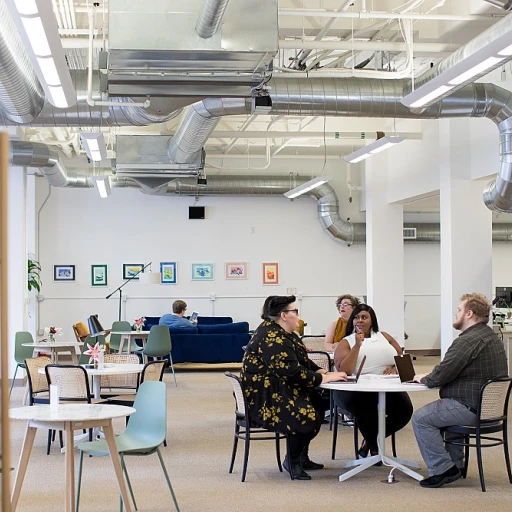
Understanding the importance of hygiene education
Why Hygiene Education is Crucial in Early Learning
Instilling the principles of hygiene in children, especially first graders, lays a foundational step towards a healthier lifestyle. At this tender age, kids are naturally inquisitive and eager to learn, making it the perfect time to teach them valuable habits like washing hands and brushing their teeth. Germs can spread rapidly among children, especially in school settings, where multiple activities take place. This is why teaching personal hygiene is not just beneficial, but essential.
Understanding how germs spread is critical, and teaching kids about this with fun, interactive activities can make the learning process enjoyable and impactful. Children need to learn why washing hands with soap water can mitigate the spread of germs and keep illnesses at bay. When children see washing hands as a game rather than a chore, they're more likely to adopt it as a lifelong habit.
Furthermore, teaching kids about the impact of cleanliness, such as washing hands, can integrate seamlessly into science lessons. This approach not only reinforces the importance of hygiene but also stimulates the children’s interest in science. A simple "glitter germs" activity, for instance, can effectively demonstrate how germs can cling to their hands and how proper washing can clean them off.
For parents and educators, introducing these concepts early can also contribute to strengthening a child's immune system. By ensuring children understand and practice hygiene, like brushing their teeth regularly and using soap, parents and teachers help protect the kids from germs and promote overall well-being.
Incorporating these educational activities into the learning environment not only prepares children for a healthier life but also adds an enjoyable, educational dimension to their day-to-day routines. For further insights into innovative and interactive learning methods, you may want to explore MIT's summer opportunities for high school students.
Benefits of interactive learning through games
Interactive Learning: A Pathway to Effective Hygiene Education
Engaging children in learning about hygiene, especially when it comes to understanding germs, can be significantly enhanced through interactive methods. Games provide a dynamic way to teach kids about the importance of washing hands and maintaining personal hygiene. When students participate in germ-related activities, they not only learn but also retain information more effectively.
Interactive learning through games makes the concept of germs tangible for children. For instance, using glitter to represent germs can visually demonstrate how easily germs spread from one surface to another. This hands-on approach helps kids grasp the importance of washing hands with soap and water, reinforcing the lesson in a fun and memorable way.
Why Games Work in Teaching Hygiene
Games are a powerful tool in education because they transform learning into an enjoyable activity. When children are having fun, they are more likely to engage with the material and understand complex concepts like the immune system and how it fights off germs. This method not only teaches kids about germs but also encourages them to practice good hygiene habits, such as brushing teeth and washing hands regularly.
Moreover, games can be designed to cater to different learning styles. Some children may benefit from visual aids, while others might learn better through physical activity. By incorporating a variety of germ games, educators can ensure that all students have the opportunity to learn in a way that suits them best.
Incorporating germ games into the classroom setting can be a strategic way to teach children about the science of germs and the importance of staying clean. These activities not only educate but also empower children to take charge of their personal hygiene, ultimately contributing to a healthier school environment.
Types of germ games suitable for first graders
Game Ideas to Foster Hygiene Awareness Among Young Learners
When it comes to teaching first graders, maintaining their interest and engagement is crucial. Germ games are excellent tools to make learning about hygiene both effective and entertaining. By integrating interactive activities into education, we can create memorable experiences that help children understand the importance of staying clean and healthy.- Glitter Germs Experiment: This activity uses glitter to demonstrate how germs spread. A small amount of glitter applied to a child's hands is just like germs. As children shake hands or touch objects, they will see how quickly the glitter - or germs - spread among them. This visual experience can effectively teach kids the significance of washing hands with soap and water.
- Soap and Science Fun: Engaging students in science-based activities, like watching how soap repels grease or dirt in water, can make hand washing habits more relatable to children. This activity visually emphasizes how essential soap is in keeping hands free of germs.
- Glo Germ Kits: These kits involve the application of a safe, glowing substance on children's hands. When placed under a special light, this substance highlights areas missed during hand washing. This direct feedback encourages better hygiene practices like washing hands more thoroughly.
- Brush the Teeth Challenge: Aligning with broader personal hygiene education, games that emphasize the importance of brushing teeth twice a day are equally valuable. A timed challenge where a child competes against themselves to thoroughly clean different zones in their mouth can instill effective brushing habits.
Incorporating germ games into the classroom
Integrating Germ Games into Daily Routines
Incorporating germ games into the classroom can be a seamless process that not only engages students but also reinforces essential hygiene practices. The key is to make these activities a regular part of the daily routine, ensuring that children consistently practice what they learn.
Setting Up a Germ-Free Zone
Start by designating a specific area in the classroom as a 'germ-free zone.' This can be a corner where kids learn about germs and how they spread. Use visual aids like posters and charts to illustrate the journey of germs from hands to objects and other people. This visual representation helps children understand the importance of washing hands and using soap effectively.
Interactive Activities for Better Engagement
Introduce interactive germ activities that are both educational and fun. For instance, the 'glitter germs' activity is a fantastic way to teach kids about germs. Sprinkle glitter on a child's hands and have them touch various objects. This demonstrates how easily germs can spread. Then, guide them through proper hand washing techniques using soap and water to remove the glitter, reinforcing the importance of clean hands.
Incorporating Science into Play
Integrate simple science experiments that highlight the role of the immune system and the importance of personal hygiene. Activities like observing how soap repels pepper in water can visually show students how soap works to keep germs at bay. These experiments not only teach kids about germs but also spark curiosity and encourage them to ask questions about how their bodies fight off germs.
Routine Reinforcement
To reinforce these lessons, incorporate short, daily reminders about hygiene. Create a routine where students wash their hands before meals and after activities. Encourage them to brush teeth and maintain overall cleanliness. Consistent practice helps solidify these habits, making hygiene a natural part of their daily lives.
Collaborative Learning
Encourage students to work in groups to create their own germ games or activities. This not only fosters creativity but also allows children to teach each other about germs and hygiene. Collaborative learning can be a powerful tool in reinforcing the lessons learned through these games.
Parental involvement in hygiene education
Fostering a Supportive Home Environment
Parental involvement is crucial in reinforcing hygiene education at home, complementing what children learn in classroom activities. Engaging kids improves the chances that these essential hygiene habits will stick. When parents participate, children are more encouraged to maintain clean hands and engage in activities that teach germ awareness.
One effective way to involve parents is to provide resources on fun, hands-on hygiene activities like "glitter germs" which visually demonstrate how germs spread. Parents can mimic classroom germ games at home, utilizing simple materials like glitter, soap, and water to show how thorough hand washing is necessary to remove particles from the skin.
Parents can also introduce similar germ-related activities to engage kids, such as brushing teeth while explaining how germs affect dental health or using a glo germ lotion to visualize germs on hands. Encouraging children to listen to a fun song while washing their hands is another practical method that helps reinforce this essential personal hygiene practice. Additionally, discussions about the immune system can make science relatable and fun, highlighting how children's white blood cells help fight off the germs.
Facilitating open communication between school and home about hygiene expectations helps maintain a consistent message. Regular updates about children's progress in germ games can be shared with parents so they can reinforce learning outcomes and complement classroom education with domestic practices.
By creating a synergy between classroom and home education, families play a pivotal role in teaching kids persisting hygiene habits. Through collaboration, children become more likely to embrace the importance of keeping hands clean and understanding how germs affect overall health.
Evaluating the impact of germ games on learning
Assessing the Results of Germ Games in First Grade Learning
Measuring the effectiveness of germ games in teaching first graders about hygiene is crucial in understanding their impact. The greatest advantage lies in how these activities can make the concept of germs more tangible for children. Through interactive methods such as glitter germs and science experiments with soap and water, kids can see firsthand how germs spread and learn the importance of washing hands effectively. To evaluate the impact, one should observe not only the immediate outcomes but also the long-term behavioral changes in children. Some key areas to assess include:- Hand Washing Habits: Observe if children more frequently volunteer to wash hands before meals or after playing outdoors. Increased attention to washing hands indicates a rising awareness of personal hygiene.
- Engagement Levels: Noteworthy is how engaged students become during germ-related activities. Are they asking questions? Do they express curiosity or enthusiasm when discussing how germs affect their health? Higher engagement levels suggest that the lessons are resonating.
- Application of Knowledge: Look for instances where children take initiative, such as using soap without being reminded. This demonstrates retention of knowledge about how germs can spread and the importance of keeping hands clean.












